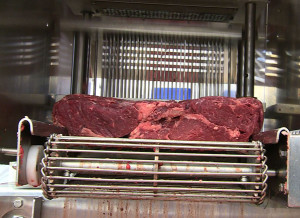Dr. Richard Raymond writes in MeatingPlace.com that when it comes to food safety, no wonder it is hard for the public to believe what they hear. Here are four public statements that fell short on honesty and accuracy:
• “Our nations’ food safety system is a hazard to public health.” — President Barack Obama shortly after his inauguration.
• “We are standing on the brink of a public health disaster.” — Congresswoman Slaughter in February, 2014, right after the FDA released its latest National Antibiotic Resistance  Monitoring System’s (NARMS) report.
Monitoring System’s (NARMS) report.
• When farmers use antibiotics, “they do so…under the care of a veterinarian.” — United States Farmers and Ranchers Alliance’s website (USFRA)
• “Salmonella is killed when food is cooked and handled properly. So, people becoming ill from antibiotic resistant foodborne bacteria and not being able to be treated in some manner, is rare if not almost non-existent.” — USFRA website
Number 1 was a good sound bite that played to the media and the change mongers, but totally failed to recognize a food safety system that may have flaws and shortcomings, but for the most part is doing a very good job with the tools given to FDA and USDA to enforce and regulate and it also ignores the dedication of our farmers and ranchers, scientists, trade organizations, packers and processors who toil every day, knowing their work is critical to your and my health.
This was just a shameful slap at tens of thousands of men and women who have chosen a less than glamorous profession, work in harsh conditions at times and try to do it right every day.
Number 2 totally ignored the fact that the latest NARMS report regarding samples of retail meat and poultry for pathogens and antibiotic resistance showed that the drugs of choice for treating foodborne illnesses caused by Salmonella and Campylobacter remain effective with no resistance seen.
It also showed significant declines in resistance in pathogens to flouroquinolones, a class of antibiotic used in human medicine but for all effects and purposes banned from use in animals by the FDA because earlier NARMS reports indicated a rapidly growing resistance that was problematical.
Numbers 3 and 4 mislead and attempt to say “no problem here with antibiotic use in animals.” Two simple facts shoot these quotes down, even as this organization tries to  speak positively for those raising our food.
speak positively for those raising our food.
Simply put, there are a lot of antibiotics being administered in feed and water with zero DVM oversight and supervision. We all know that as a fact.
Salmonella is the number one cause of deaths from foodborne illnesses in this country, accounting for 29 percent of the total deaths. If you read the CDC annual reports you know that fact also. Tell the family members of the 452 persons who died in 2012 that those deaths were “non-existent.”
The Salmonella pathogen class also causes over 1 million illnesses per year in the United States. That fact cannot be waived off with a toss of a hand and a web page declaration, especially after the recent Foster Farms related outbreak that sickened over 500.
We have been making steady progress in making our meat and poultry safer, especially since the Jack in the Box E. coli O157:H7 outbreak that caused the entire industry to declare food safety a non-competitive arena.
Headline seekers and grabbers do not help the movement to continue to improve. Using logic, common sense and science as the movers and shakers will produce a safer food supply.
